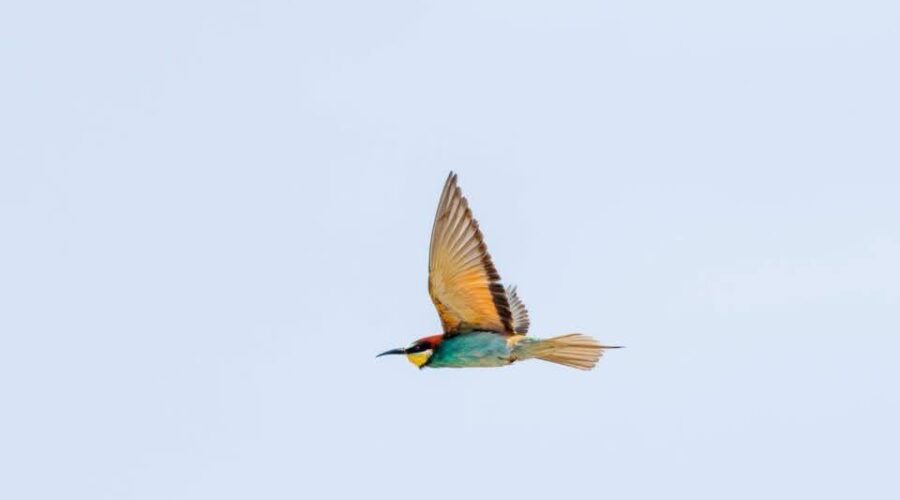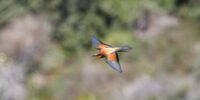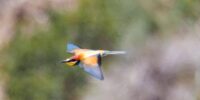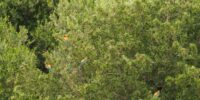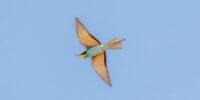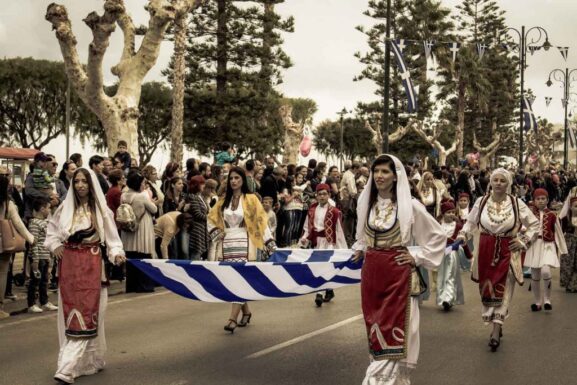The Μελισσοφάγος: Kos’s Most Colorful Summer Guest
If you’ve ever seen a flash of electric blue, golden yellow, and deep chestnut dart across the sky on a hot day in Kos — you’ve witnessed the magical Μελισσοφάγος, also known as the European Bee-eater (Merops apiaster). With colors that rival the tropics, this migratory bird visits Kos each year to breed, adding a splash of wild beauty to the island’s natural landscape.
🌍 A Vibrant Migrant With an Eye for Kos
The European Bee-eater arrives in Greece from sub-Saharan Africa every April to early May and stays until late summer. Kos, with its mix of open fields, light forests, and sandy banks, is one of its favored breeding destinations.
These birds are social and often found in flocks, chattering with their soft, rolling calls. They’re famous for their graceful flight and aerial hunting skills — often seen snatching bees, dragonflies, and wasps mid-air with acrobatic swoops.
📍 Where to Spot Bee-eaters on Kos
If you want to experience the Μελισσοφάγος in action, here are the best places to look:
-
- Tigaki Salt Lake (Αλυκή Τιγκακίου): Open space and water sources attract flocks of bee-eaters.
-
- Zia & Antimachia countryside: Look near dry stream beds and vertical cliffs.
-
- Kardamena to Mastichari rural roads: You might see them perched on telephone wires or fence posts.
-
- Psalidi wetlands: A lesser-known but excellent birdwatching site during migration.
Bring binoculars and a bit of patience — once you spot their dazzling colors, you won’t forget it.
🐝 Why the Name “Μελισσοφάγος”?
In Greek, “Μελισσοφάγος” means “bee-eater” — and yes, these birds really do eat bees! But don’t worry, they skillfully remove the stinger before swallowing. Their diet also includes:
-
- Wasps
-
- Dragonflies
-
- Butterflies
-
- Beetles
They play a role in insect population control and are part of a healthy ecosystem.
🐣 Life Underground
Though they live in the air, bee-eaters nest underground! They dig tunnels up to 1–2 meters long in sandy banks or flat fields. Inside, they raise 4–7 chicks during the summer months. These nest colonies are used year after year and are very sensitive to disturbance — making conservation crucial.
⚠️ Threats and Protection
Though still widespread, the European Bee-eater faces threats like:
-
- Habitat loss (especially nesting banks)
-
- Overuse of pesticides (reducing insect prey)
-
- Disturbance during breeding season
Luckily, Kos’s natural terrain still provides good habitat, and increased awareness helps keep their numbers stable.
💡 Fun Facts
-
- They can eat up to 250 bees per day!
-
- Their scientific name Merops apiaster comes from Latin: “merops” = bee-eater, “apis” = bee.
-
- Bee-eaters pass food mid-air to mates as a courtship gesture.
-
- Despite their bright colors, they blend surprisingly well into dry grassland when perched.
🧭 Kos: A Birdwatcher’s Paradise
The Μελισσοφάγος is just one of many beautiful bird species that call Kos home in the warmer months. Whether you’re a seasoned birder or a curious traveler, watching bee-eaters dart through the blue Aegean sky is a highlight of the island’s natural beauty.
So next time you’re near a field or salt lake on Kos — look up. A rainbow may just fly by.
📸 Seen a Μελισσοφάγος on Kos? Tag us @koscityguide and share your photo — we might feature it!

